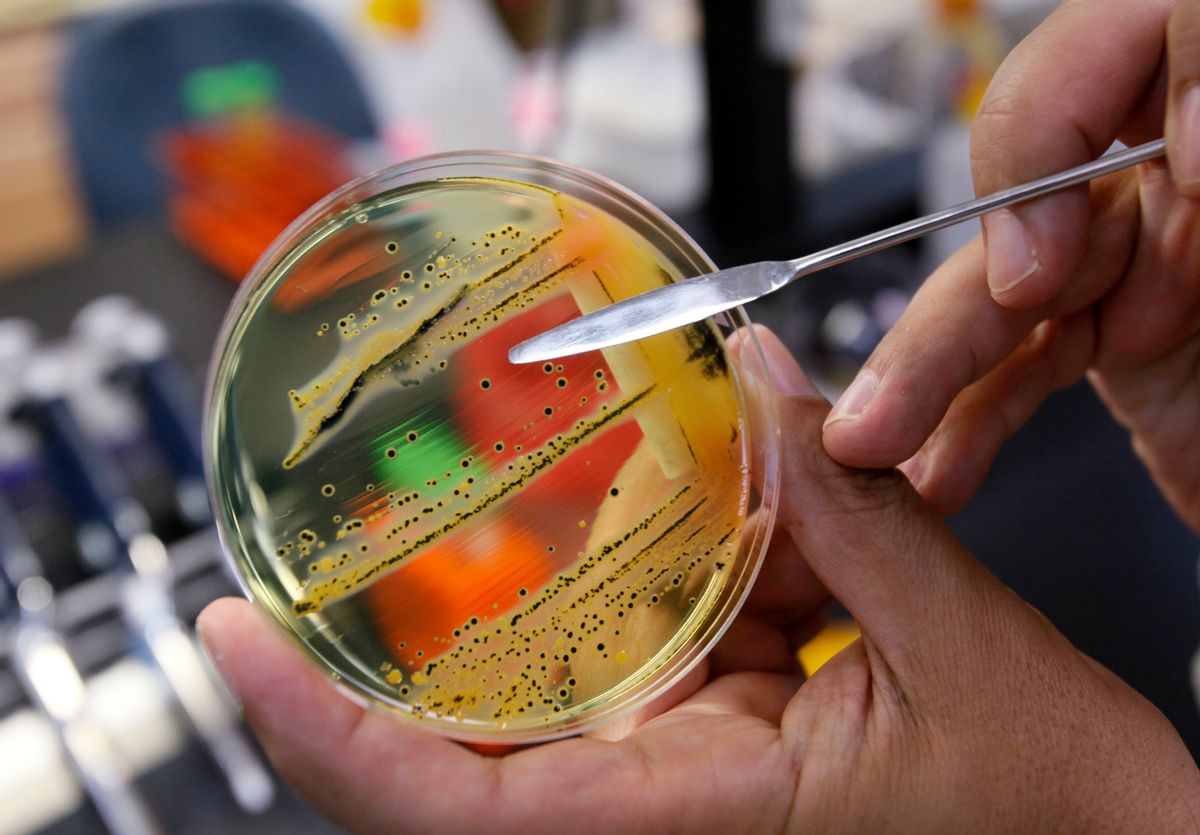Leo Tolstoy famously wrote that “All happy families are alike; each unhappy family is unhappy in its own way.” According to the science historian Domenico Bertoloni Meli, the same can be said of disease. A human body in good health has its quirks – a long nose, a crooked thumb – but these are mere noise, variants around a mean. Disease, on the other hand, is the disruption of an ideal: a gnarled tumor blossoms over a bone; skin erupts in a patchwork of sores as turbulent as a dry riverbed.
Meli’s new book, "Visualizing Diseases" (out in January), guides readers on a tour of the art and science of illustrating human pathology that spans several hundred years. At its core is the premise that the practices of rendering healthy and sick bodies evolved separately. This occurred not only thanks to technical constraints that made it challenging to effectively depict pathology (imagine trying to convey skin disease before color printing), but because physicians didn’t always think these images had practical value. From our modern vantage point, where medical imaging technologies like fMRI, CT scans, and X-rays are a standard part of patient care, it’s curious to imagine an age when pinpointing the seat of a malady — a tumor, a lesion, or hardening of tissue — had little relevance to treatment.
I remember a protracted experience I had with doctors when I was a teenager, trying to identify the cause of a mysterious fatigue. Nothing ever surfaced in the numerous tests and scans I had. Soon I became afraid that the absence of a lesion implied I was fabricating the symptoms. Seeing disease has the power to validate it, and ever since my experience growing up, I’ve come to feel a slight relief when receiving an abnormal test result from a nurse. Ah, there really was something there. What I wanted to know, and what I wish this book had taken more time to discuss, was how the existence of illustrations of disease changed the practice of medicine. Did a picture of a diseased lung ever evoke pity, or understanding, that sicknesses could lie unseen and blameless beneath the skin?
Indeed, the prevalent theory of the Middle Ages, that imbalanced humors gave rise to sickness, left little room for organs and yet-undiscovered cells in the model of health. Furthermore, Meli argues convincingly, pre-Enlightenment physicians may not have appreciated how destructive structural changes inside the body, such as lesions and organ cancers, could be because they seldom operated on patients. For centuries, he explains, surgeons and physicians belonged to separate guilds, hardly intersecting in their day-to-day practice or cross-pollinating with their hard-won perspectives.
One of the book’s strengths is that it impresses upon the reader how the state of technology, both scientific and artistic, perpetually guided the nascent field of pathological illustration. Like so much else, the story of anatomical illustration is one of economy as well as medicine: to produce a folio of images, there needed to be printers, engravers, artists, a hospital or government institution to provide access to bodies, and of course, a medical professional.
Bone diseases were among the very first pathological illustrations, and Meli proposes that’s both because bones were the easiest body part to preserve and collect (which some physicians did by the hundred, gathering enough to make private museums in their homes), and because bones could be clearly represented before the advent of color printing. Internal organs could not be satisfactorily rendered until printing had sufficiently advanced to allow cost-effective coloring, and even then, their development was hindered by the difficulty of keeping an organ around long enough to draw: among the most enjoyable moments in the book are when Meli remarks that artists would sometimes be called at odd hours to attend an autopsy, or might be delivered a liver at random.
It’s both a testament to the author’s eye for detail, and a challenge for a non-specialized reader like myself, that this work reads like a doctoral thesis. Meli’s survey takes place almost exclusively in European epicenters of medicine such as Leiden, London, and Paris, taking a magnifying glass to the practitioners and artists who gave Western pathology its foundational pictures. The cast of characters is long, and the book functions as an encyclopedia of the working lives and academic lineages of these men (and it is only men).
While the scope of this work must be appreciated – I can only imagine the labor it took to compile this biographical information – it is dry and has long stretches of text that read like records more than a narrative. Although the book is beautifully printed, with an inviting cover bearing accolades about the accessibility of the story, I struggled to identify who outside of medical historians would find this book so accommodating. Frequently, Meli references diseases by their historical names (like phthisis and fungus haematodes) without explaining their modern translations or welcoming the unacquainted reader with descriptions. The work is a worthy contribution to the history of medicine, but Meli takes few pains to initiate the layman.
What I craved most from "Visualizing Disease," and what I was disappointed not to find, is a connection with the pathological illustrations themselves. Many of the prints left me in want of a story, most of all a post-mortem drawing of a man with the skin of his abdomen and neck peeled away to reveal an abundance of small tumors, like fleshy barnacles on his organs. He looks like he is sleeping peacefully, with this window cut out to peer inside, and then I realize that those pale little nodules are the very thing that choked out his life. For a book of its size, the images receive sparingly little discussion or explanation of their content. Their powers are never fully invoked, leaving it to the reader to forge a distant kinship with these long-ago wounded bodies.


Shares